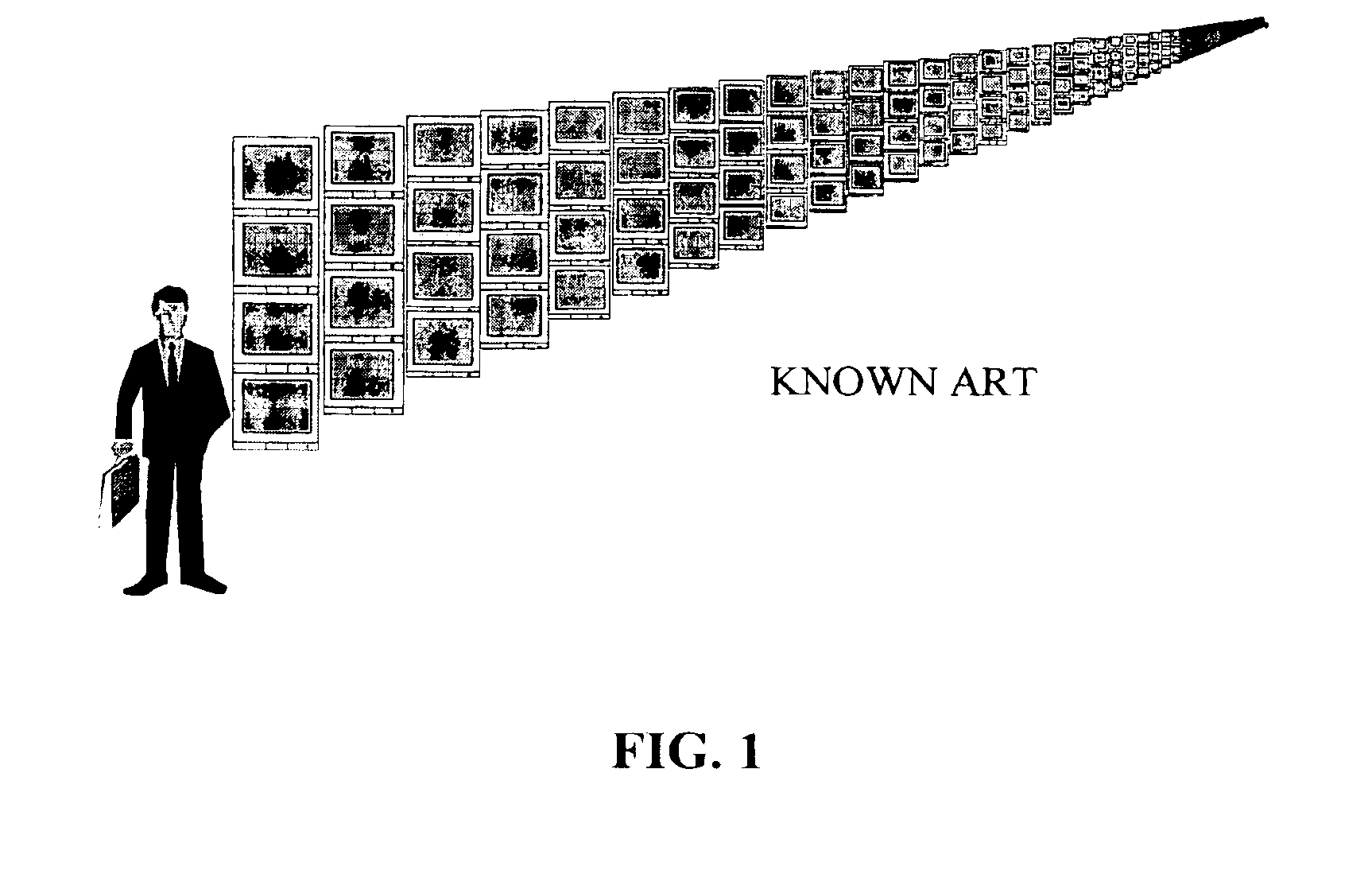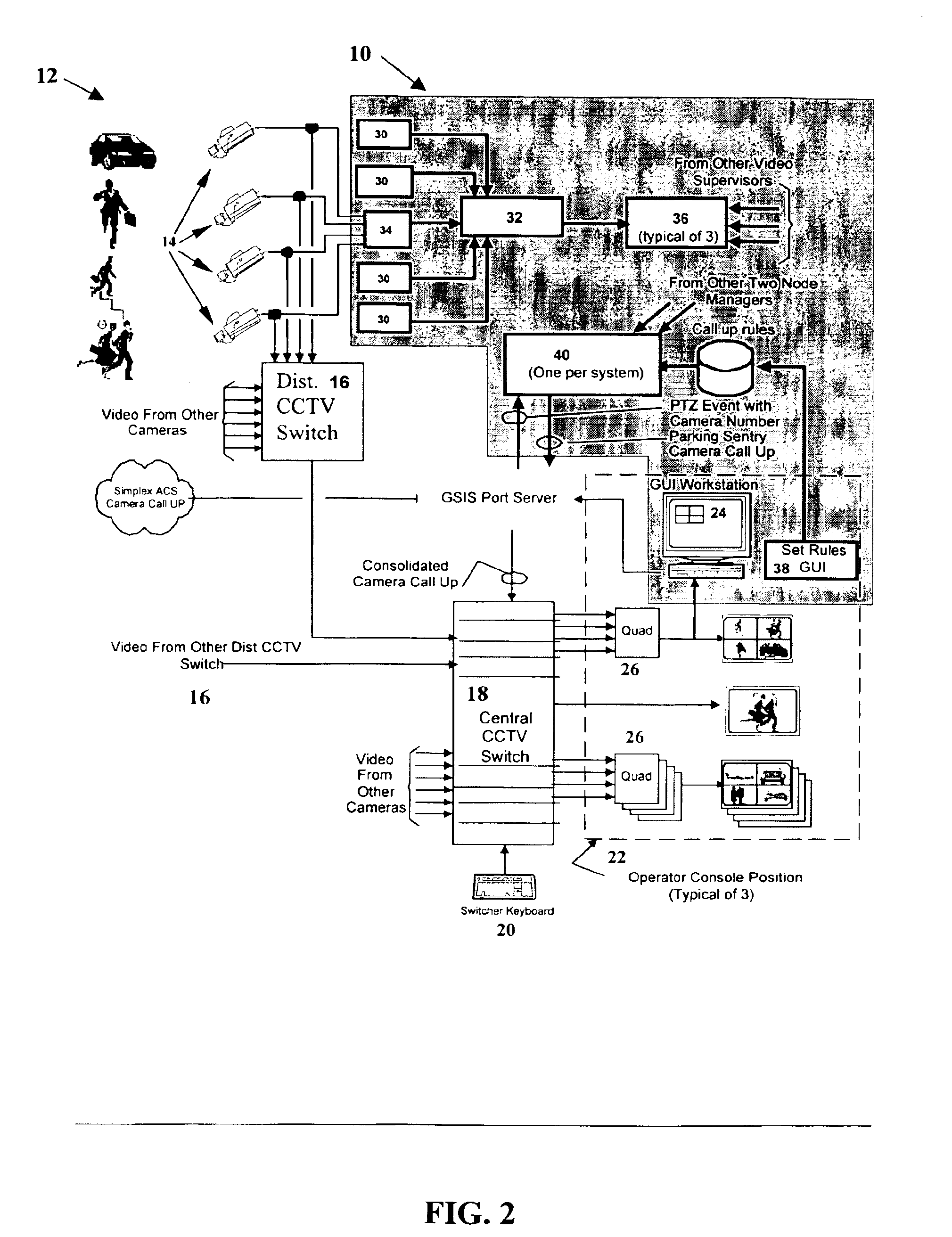System for automated screening of security cameras
a security camera and automatic screening technology, applied in the field of security systems, can solve the problems of increasing the risk of auto theft and auto burglary in parking garages so equipped, and owners may face difficult to defend claims, so as to reduce the number of floating point calculations
- Summary
- Abstract
- Description
- Claims
- Application Information
AI Technical Summary
Benefits of technology
Problems solved by technology
Method used
Image
Examples
Embodiment Construction
[0089]Referring to the drawings, and in particular to FIG. 2, software components of processor-controlled selection and control system (PCS) 10 are shown in boxes in the upper right area, as contained within the broken dash-and-dot border. Other components in the figure reflect the block diagram of CCTV subsystem12 used in connection with electronics features including the software-driven components in accordance with the inventive system configuration. The software-driven components of the electronics subsystem cause video outputs from video cameras of the CCTV subsystem to be automatically and selectively made available to display monitors of the CCTV system, where the camera views may be viewed by security personnel who observe the display monitors, by video selectively supplied to one video display console for an operator, or to more such consoles.
Existing CCTV System
[0090]It will be assumed for purposes of explaining the new system that it includes, as in the example given abov...
PUM
 Login to View More
Login to View More Abstract
Description
Claims
Application Information
 Login to View More
Login to View More - R&D
- Intellectual Property
- Life Sciences
- Materials
- Tech Scout
- Unparalleled Data Quality
- Higher Quality Content
- 60% Fewer Hallucinations
Browse by: Latest US Patents, China's latest patents, Technical Efficacy Thesaurus, Application Domain, Technology Topic, Popular Technical Reports.
© 2025 PatSnap. All rights reserved.Legal|Privacy policy|Modern Slavery Act Transparency Statement|Sitemap|About US| Contact US: help@patsnap.com



